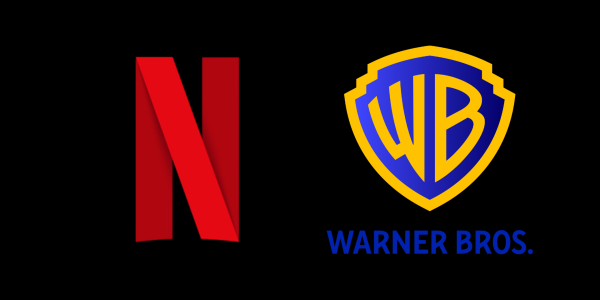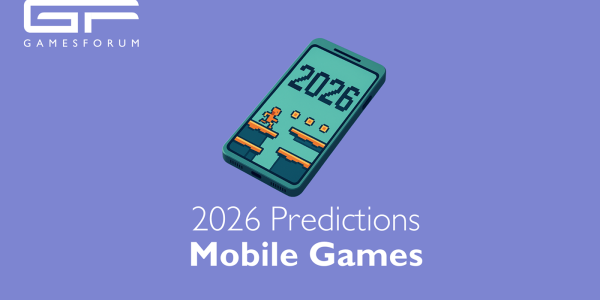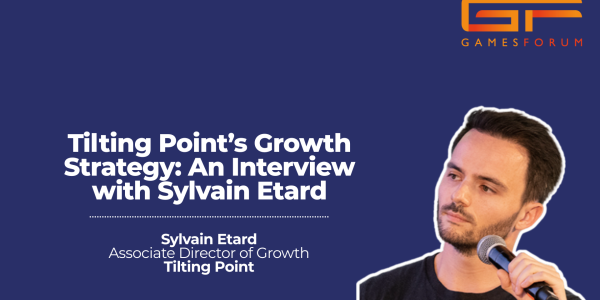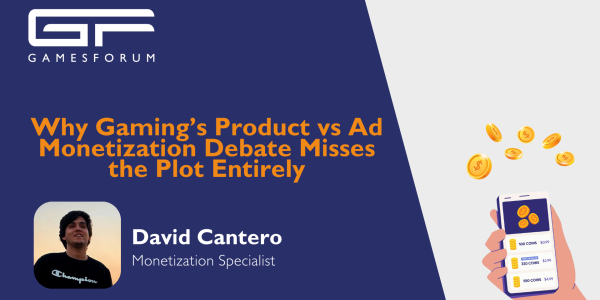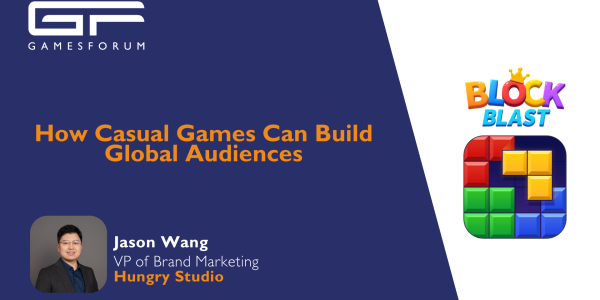‘We’re witnessing a renaissance in monetization.’ - LILA Games’ Joseph Kim on LiveOps, eSports, and the Next Big Shift

Joseph Kim, CEO of LILA Games, has long been one of the most candid voices in mobile gaming. In this conversation, he shares his perspective on what it means to build a true learning organization: one that adapts faster than the market, and how that mindset is shaping the future of game monetization, from AI-driven liveops to evolving player expectations across regions.
Joseph, you’ve spoken about building a “learning organization.” How does that philosophy influence how your teams think about monetization experiments and iteration?
As an industry, we operate in one of the most competitive and dynamic markets globally. Given how rapidly the alpha in our industry can change, our teams must adopt an attitude of continuous learning. We need to be open to new ideas and continuously evaluate every practice to align with creating an organization that can compete globally.
The mobile games industry, in particular, has a historical legacy of exploiting new alpha for competitive advantage. Some specific historical examples:
- Social to Mobile: The migration of social and canvas gaming to mobile
- Incentivized Installs: The introduction of incentivized installs by Tapjoy, which at one point accounted for half of all iOS installs
- Mobile Affiliate Marketing/Applift: The rise of affiliate marketing for mobile by Applift, which then drove Candy Crush to new distribution heights
- Game of War and Chinese MMO Monetization: Game of War leveraging Chinese MMO monetization schemes to increase LTV and out-market Kingdoms of Camelot
- Hybrid Gameplay and 4X: More recently, we’ve seen the introduction of hybrid gameplay in 4X games, such as Whiteout Survival by Century Games, to expand their top of funnel and attract a broader audience beyond hardcore gamers.
Every month, it seems that our industry introduces innovations and finds ways to gain a competitive advantage.
That’s the industry perspective on being a learning organization.
From a discipline perspective, you can think of your company as two parts: 1. The People, and 2. The Product. I would argue that most organizations over-index on product focus and do not invest enough in people development. This may sound cliché, but if you actually think about it, it’s not as obvious as it sounds.
Too many companies overly stress adding complicated analysis, heavy processes, and meetings to try to correct a fundamental issue: better people mean less process, less complications, and less overhead.
A learning organization means having a culture where challenging one another is ok. Giving direct feedback should be allowed and actually encouraged, which isn’t the culture at many companies, especially larger ones.
Do you believe the next big monetization innovations will come from game design, technology (AI, blockchain, UGC), or from new business models entirely?
We are actually witnessing significant monetization innovations now in mobile events, liveops, and eSports.
We saw a 6X increase in revenue for Brawl Stars last year, which reached all-time highs, a 6-7X increase in revenue for Clash Royale in July, and a completely unheard-of revenue per DAU for Delta Force relative to PUBG Mobile.
In the case of Delta Force, AppMagic data shows PUBG Mobile at over 18X+ DAU, and yet Delta Force was able to beat PUBG Mobile in daily revenue by 75% and beat them on a longer sustained basis of 6 days. This isn’t to say that Delta Force is a better, long-term monetizing game than PUBG Mobile, but that there are now liveops mechanisms via events design and eSports that can dramatically drive per player monetization on a DAU basis.
These kinds of innovations should be studied, and I’m sure there will be more to come. But the renaissance in monetization right now is clearly in liveops, events & event integration, and eSports
How do you distinguish between healthy monetization that players embrace versus systems that risk creating backlash?
The simple answer here is: Who is your audience? There are often specific player expectations associated with a company’s brand or a particular game IP.
What are the audience's expectations for monetization?
I don’t think there is a one-size-fits-all answer here. What a Chinese audience for a hardcore mobile MMO may consider appropriate and fair may differ significantly from what a Western, casual Roblox simulation game player considers appropriate.
In my Gamemakers newsletter a few weeks ago, I studied the patterns of success for Western game studios. There were three specific patterns for success: 1. Small teams, 2. Long horizon development (3-8 years), and 3. High community engagement.
It’s this last part that studios need to embrace more. Interacting with the community to understand what they believe provides exceptional value and feels fair to them is what should define healthy monetization for players.
You also have to understand the specific cultural context between East and West. For example, many ways Westerners demonstrate social status are through their house and car. In the East, where house parties may not be common and people often spend time away from their homes, social status may be more closely tied to one's attire and the model of their phone. And maybe even how much you’ve spent in a game.
In your view, what’s the untapped monetization opportunity outside of cosmetics and battle passes that most studios aren’t thinking about yet?
It’s been a long-standing secret in the industry that personalized offers can have a dramatic impact on player LTV.
Also, everyone is, and has been, talking about the use of AI in game development and liveops.
The big opportunity today is for smaller studios that may not have had access to ML experts to be able to leverage AI to create targeted offers that have a significant impact on their player monetization.
In this context, AI applied to liveops and offers can be used in two different contexts.
First, when considering player segmentation, timing, and specific offer bundles tailored to different players in a game, AI, through often very simple heuristics, can drive significant LTV. Again, what may be easy for AI and ML experts to do will now be within the reach of anyone with access to Claude or ChatGPT.
Secondly, we are operating in an increasingly complex and dynamic competitive macro environment. As a specific example, let’s consider the complexity of determining pricing for IAP in a game.
Today, we now effectively have 4 layers of pricing:
- Direct IAP purchases
- Offers and sales
- Battle Pass
- Web Shops
How does a mobile PM manage and optimize all 4 layers of their IAP pricing? Doing manual nonsense by feel? AI will soon be able to optimize these layers to drive increased monetization in a way that human PMs fiddling around in spreadsheets cannot. And we haven’t even discussed geo-specific pricing, either.
How do you approach monetization differently when designing for Western vs. Asian markets, given cultural differences in spending behavior?
There are clearly differences in monetization norms between East and West. Furthermore, there are differences among the Asian countries, as well as within various groups and individuals within those geographies.
On a high level, it’s not necessarily viewed as bad for players in the East to pay for an advantage. To some, it’s considered good to pay and show that you can pay sometimes large amounts of money for a game advantage.
In the West, many players do not want others to know that they have spent money in a game. They want to be recognized for their skills or specific insights rather than their in-game spending. And so you may often see players who claim they have never spent money in the forums, but when you check their player accounts, they may have spent thousands of dollars.
You also have to understand the specific cultural context between East and West. For example, many ways Westerners demonstrate social status are through their house and car. In the East, where house parties may not be common and people often spend time away from their homes, social status may be more closely tied to one's attire and the model of their phone. And maybe even how much you’ve spent in a game.
The TLDR here is that there are different norms and different aspirational forms of social status that impact what is desirable.
If you look at MOBAs or shooter games like Delta Force, it's clear that those games are resonating with Chinese audiences in a way that they aren’t with Western audiences.
Approaching monetization simply returns to the fundamentals: understanding your audience and engaging with them to determine what they want.
At our company, I’ve developed a persona-based model I call the Aspire/Desire framework. It’s a simple concept: what does your target audience aspire to, and what do they desire in your game? How do you monetize those aspirations and desires in your game in a way your audience feels is fair?
Do you see ad-based monetization playing a larger role in core games, or do you think it will remain primarily casual-focused?
Historically, the problem with ad monetization in mid-core and hard-core games has been the value exchange. You need to provide enough value for a player to tap on an ad, making them more likely to do so. Generally, that value, when compared on an IAP basis, doesn’t back out, and you would often see cannibalization of ads to IAP-driven spend.
In other words, no one will tap on an ad to get 0.1 gems if that’s the fair value exchange compared to IAP. If you offer 10 gems or 100 gems for viewing an ad, that’s orders of magnitude in additional value given away; you may be able to get a player to view, but then you may have cannibalized some IAP revenue.
If you monetize ads to players who would not have otherwise monetized in your game, that’s incremental revenue. Great! The problem is when your IAP spenders shift their monetization away from IAP to a discount-heavy IAA.
In today's context, I’ve been hearing anecdotally that ad-based monetization is making more sense, especially with the ability to target ad monetization more specifically by player segments.
I’m not currently up to speed on this topic, but after attending to other monetization priorities, such as some of the issues already mentioned in this post, I’ll likely review ad monetization for our shooter game. However, it’s a bit lower in my prioritization of monetization.
With shifts like subscription services (Game Pass, Netflix Games) and cross-platform play, how do you see traditional F2P monetization evolving?
I don’t mean to be dismissive, but I would argue the outlook for subscription-based games doesn’t seem to be working. It doesn’t seem like the current trajectory for subscription would seriously impact F2P monetization.
Having said that, I do think there’s been a bit of overemphasis on F2P when some games should clearly be monetized via a premium payment model.
The bigger issue regarding F2P monetization is regulatory. The EU regulatory issues may have a dramatic impact on F2P monetization. I’m not current on those issues so I’m gonna fast follow the implications from that, but certainly trying to keep up with what’s happening as it may dramatically impact F2P.
If you had to bet, what’s the one non-gaming industry trend (e.g., social media, creator economy, streaming) that will have the biggest impact on game monetization in the next five years?
If you examine the high-level entertainment attention economy, there are three primary surfaces competing for user attention: gaming, social media, and VOD.
I believe players have a fixed wallet of discretionary spending that they will allocate between these three entertainment areas.
With the emergence of AI, we are witnessing the creation of new forms of social media content, such as dynamically generated AI video content, exemplified by services like Sora, which is transforming this content into a unique social media platform.
AI is a wildcard that can shift the dynamics of the entertainment attention economy. Clearly, AI will impact all three entertainment areas in dramatic ways that are difficult to predict today.
This will impact game monetization to the extent that attention shifts between these different entertainment surfaces. Furthermore, potential new monetization models may emerge that divert funds from fixed player wallets for discretionary spending.
At this point, it’s still unclear what the impact will be, except to say that in the next few years, all of us are in for a wild ride, and we should be ready to throw out all of the old rulebooks because the game will change in dramatic ways none of us can predict today.
🎟️ Catch Joseph on the Content is King: LiveOps Designed for Revenue & Retention panel at Gamesforum San Fran.



